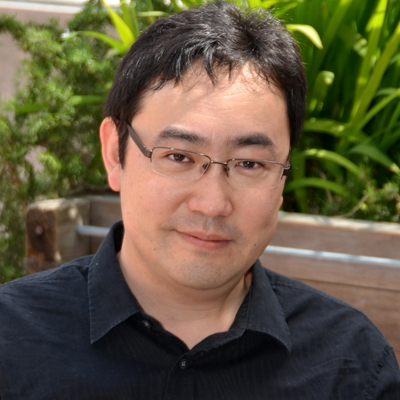Understanding the origin of the universe and the fundamental principles of nature that guide it
The 1998 Nobel Prize discovery of the accelerating expansion of our universe has led to the dramatic new view that our universe may be one of the many universes in which low energy physical laws take different forms: the multiverse. This picture is also supported theoretically by the fact that accelerated expansion of space is generically eternal (eternal inflation) and that string theory possesses a complicated vacuum structure (string landscape). This new view, however, leads to the difficult problem of defining probabilities in infinitely large spacetime.
Dr. Yasurnori Nomura, of the University of California, Berkeley, works mainly with particle physics theory and cosmology to study the history of the universe. His research is founded upon the view that quantum mechanics is essential to understanding the multiverse, even at the largest distance scales. He presents an explicit framework that allows us to treat the multiverse in a consistent fully quantum mechanical manner. Therefore, his research answers the age-old questions of where we come from and how the world came to be.
Current projects include:
-
Exploring how observations fit into our discovery of the fundamental quantum theory of gravity and potentially testing these ideas in current and future observations.
-
Performing research in conventional particle physics which helps to understand the origins of structures we observe in our universe. In particular, he is interested in learning what new physics beyond the standard model we can expect.
-
Dr. Nomura studies the physics of extra dimensions to gain insight into its theories and phenomenology. Extra dimensions may have many remarkable features that are useful in building realistic models within particle physics.
-
Continuing to study the physics of his newly introduced framework for unified theories. This class of theories allows for precise predictions of the weak mixing angle at low energies and solves various problems in the conventional four-dimensional grand unified theories. Dr. Nomura is interested in continuing to study physics of flavor in this framework, such as bi-maximal structure for neutrino mixing.
-
Dr. Nomura has constructed a realistic model in warped space that predicts a plethora of new particles at the TeV scale and also allows a possibility that the Higgs boson is a composite particle of the more fundamental sector of the theory.
Dr. Yasurnori Nomura's research combines highly formal aspects of theories, e.g. the emergence of spacetime from a fundamental theory of quantum gravity, to their observational consequences, such as signals in future cosmological observations and particle physics experiments. He has proposed that the eternally inflating multiverse and many worlds in quantum mechanics are the same concept. He has developed a new theoretical framework to describe dynamics of quantum gravity in low energy regimes, preserving locality.
Bio
Yasunori Nomura received his Ph.D. from University of Tokyo in 2000, where he held a fellowship of Japan Society for the Promotion of Science. He was a Miller Research Fellow at University of California, Berkeley from 2000 to 2002, and an Associate Scientist at Fermi National Accelerator Laboratory from 2002 to 2003. He joined the Berkeley physics faculty in July 2003. Awards and honors include: DOE Outstanding Junior Investigator Award (2004), Alfred P. Sloan Research Fellowship (2005), Hellman Family Faculty Fund Award (2005), and Simons Fellow in Theoretical Physics (2012).
Dr. Nomura developed interests in fundamental physics and cosmology while he was fairly young. As a child he enjoyed playing tennis but also reading public books on subjects including particle theory, string theory, and cosmology. Mixed with his passion for physics and excellent mentors, even as a high school student, he was lead to his current research.


